What Do the Numbers on Binoculars Mean?
Last Updated on
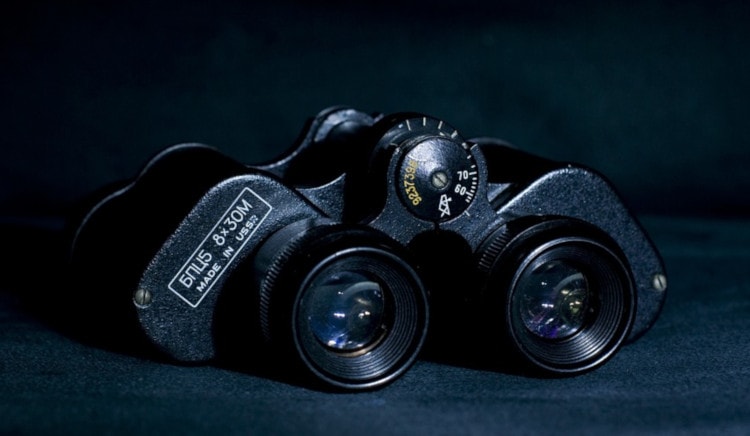
Getting a new set of binoculars is always fun! You’ll find them super useful for a variety of applications whether it’s hunting, bird watching, urban exploration, or helping you watch the game from those nosebleed seats.
But you may be wondering just what those numbers printed on the side of your binoculars represent.
You didn’t purchase your optics for a math lesson. But don’t worry, there’s really no math involved, and understanding these numbers can help you better operate your binos so you don’t miss a single thing.
We’ll use a binocular set with the numbers 8×42 printed on the side as the basis for our explanation throughout this article.

What Do the Numbers on Binoculars Mean?
The numbers printed on the side of your set of binoculars clue you into just how efficient your binos are actually going to be when viewing things at a distance.
They’ll also provide you with key information that relates to the comfort you’ll experience when using them.
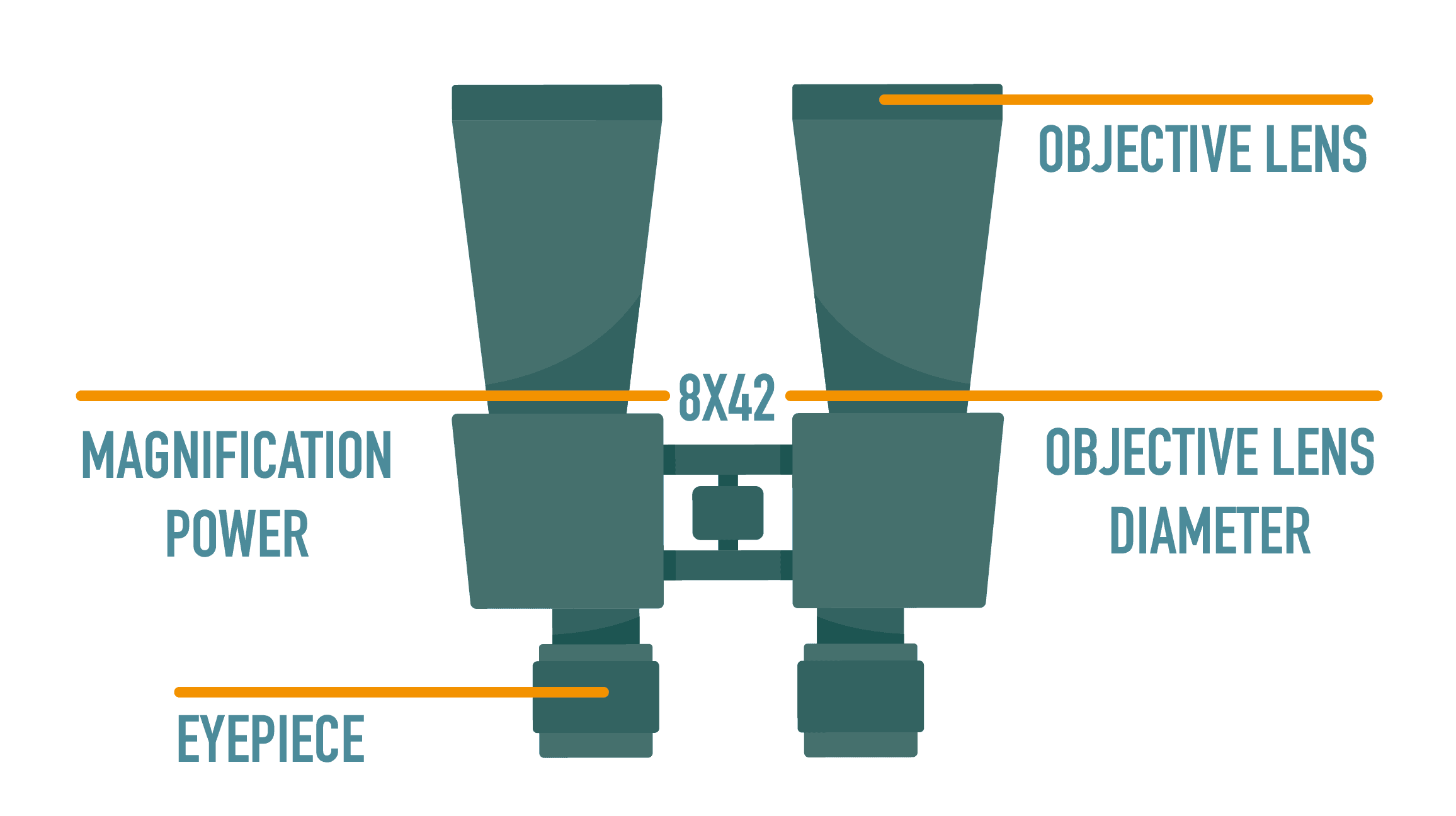
There are only two parts to the numbers displayed. The first number (in our case, 8) refers to the magnification power of the binocular set. The second half of the number (42) refers to the actual size of the lens in millimeters (objective lens diameter).
Let’s go over how each of these numbers affects your binocular specifications and your actual use of the optics.

Understanding Binocular Specifications
Size
The first thing we will look at is the physical size of the binos as a whole unit. Did you know you can estimate the actual size of your binos without ever looking at them? This can come in handy if ordering online. And we’ll use the second number in the string to verify this.
Objective Lens Diameter
This is technically defined as the diameter of the lens closest to the target. And in our case, it’s 42. Now, this is very important to note because the bigger the lens, the higher amount of light that will enter and be registered by the lens.
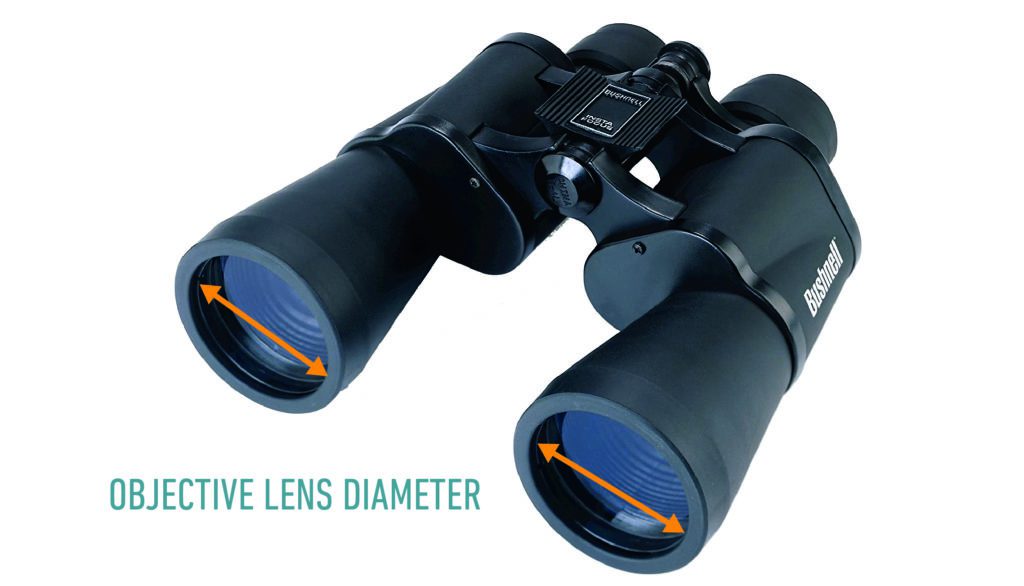
An objective diameter of 42 means that our example set would be great for use in lower light situations such as dawn/dusk operations or even astronomy. However, be wary — having too much light enter your lens can cause a blurry image.
Binoculars with a lens size of greater than 40mm are most commonly full-size binoculars. These are normally the bulkiest of binocular designs. Looking back at our example (50mm), this is where our binoculars would fall.
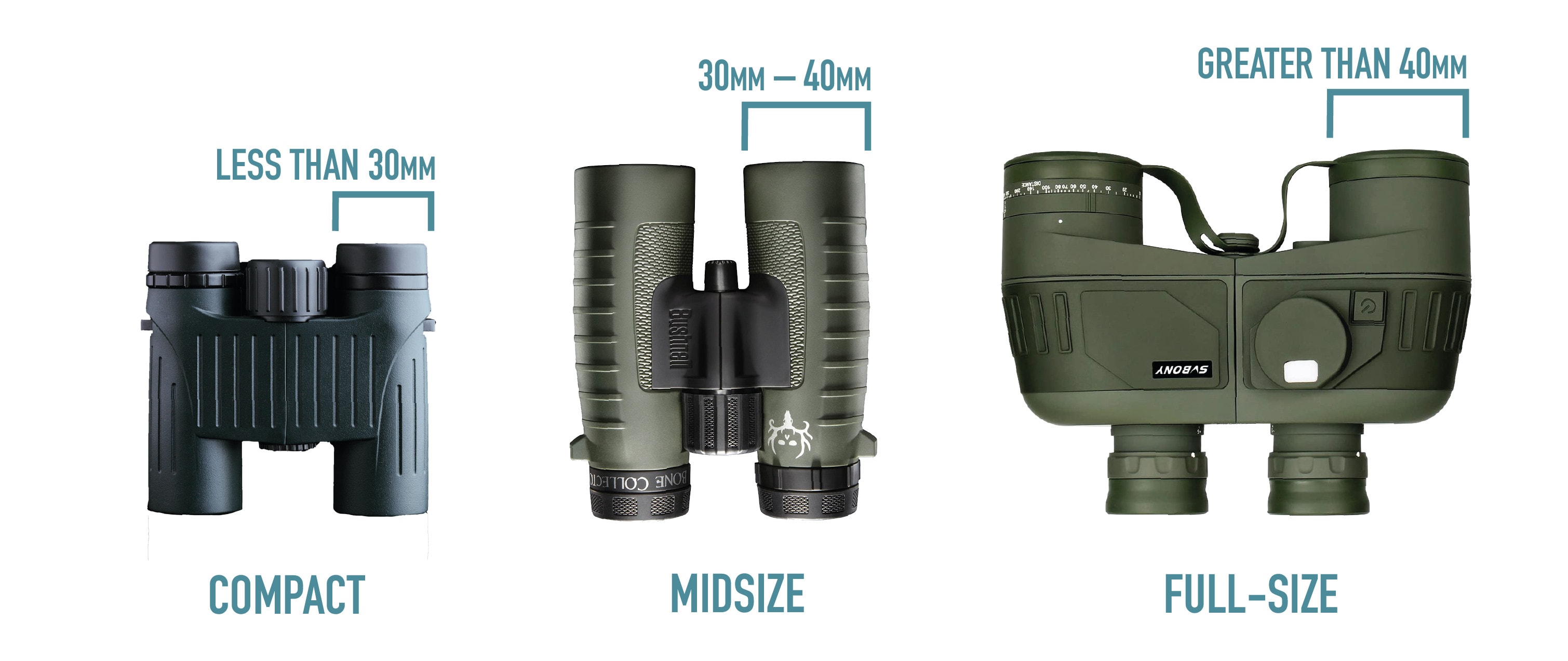
However, if you’re looking at a number less than 30, you can expect a set of compact binoculars. These are much more convenient to carry around. Anything between 30-40mm can be constituted as a mid-size variant which reconciles the best of both full-size and compact bino sets.
Magnification Power
Magnification is one of the first things you’ll want to check out when purchasing a new set of binoculars. After all, you are trying to view things at a distance. However, bigger isn’t always better in the case of binoculars.
Sure, a larger magnification power will allow you to get real up close and personal. But at higher powers, even the slightest of handshake will askew your vision from your target. This effect minimizes the lower magnification power you have. A good middle-of-the-road standard for binoculars is an 8. Our example has a 10 which gives the binoculars a higher zoom, but less image stability control.
Field of View
Having a bigger lens meaning having a bigger field of view, right? Actually, it’s quite the opposite. The bigger your lens the smaller field of view you’ll actually have. For general use binoculars, you should find a balance somewhere between 38-42mm. This will give you a decent field of view while allowing enough light to enter. Speaking of….
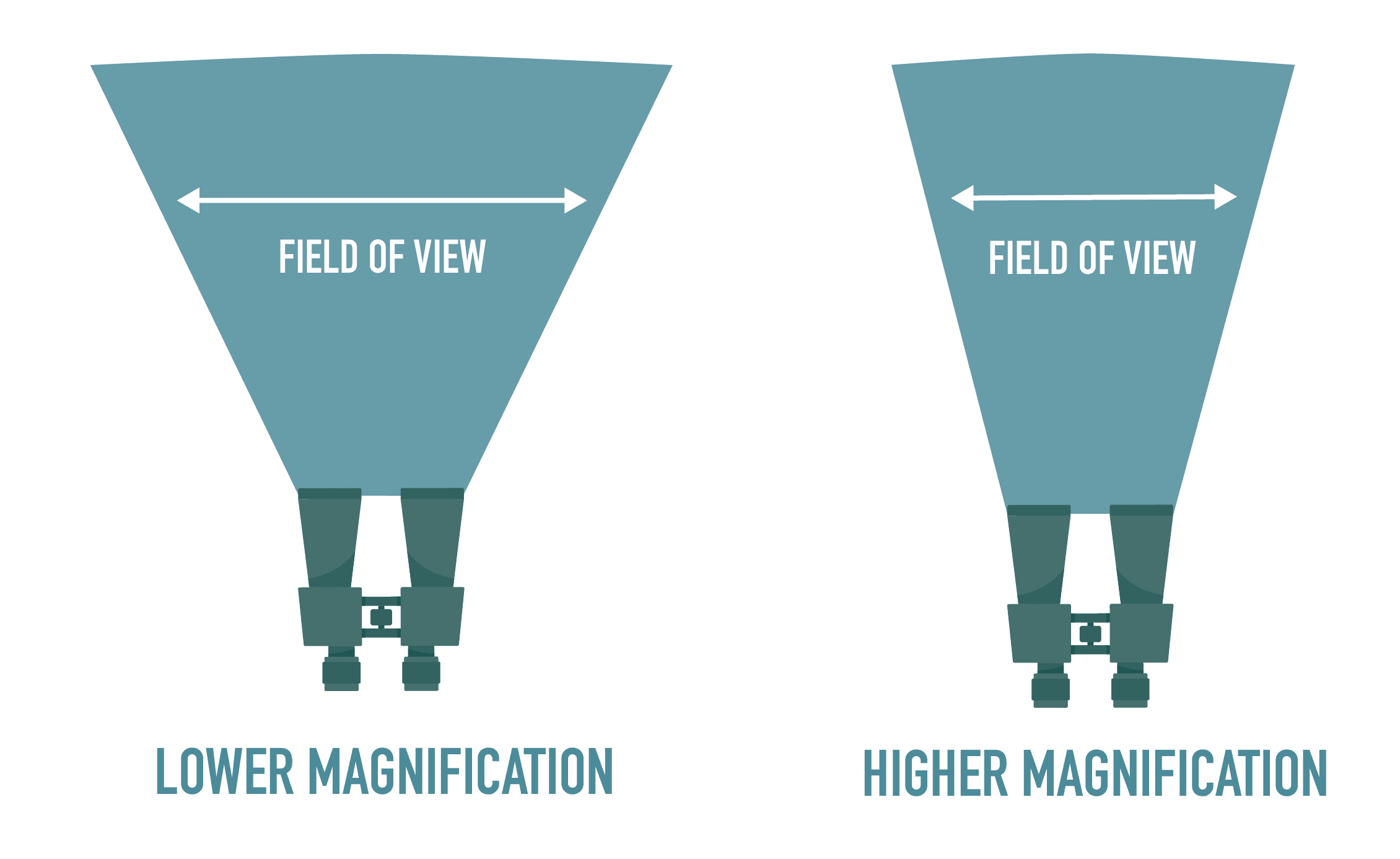
Exit Pupil
In order to make the most of your binocular set, you need to consider the exit pupil. The exit pupil is that little column of light that you can see through your binos when you hold them away from your face. The wider that column is, the more light will be registered by your eyes when using the binoculars. This can actually vary from person to person. However, it’s been shown that older individuals’ pupils don’t dilate as much. This means that older users may want a more concentrated and smaller exit pupil.
In order to calculate this, you’ll simply divide the second number in the string by 10, and the result is the size of your exit pupil. Our example set is as follows:
- 50mm divided by 10 = 5mm
- 5mm is the size of our exit pupil
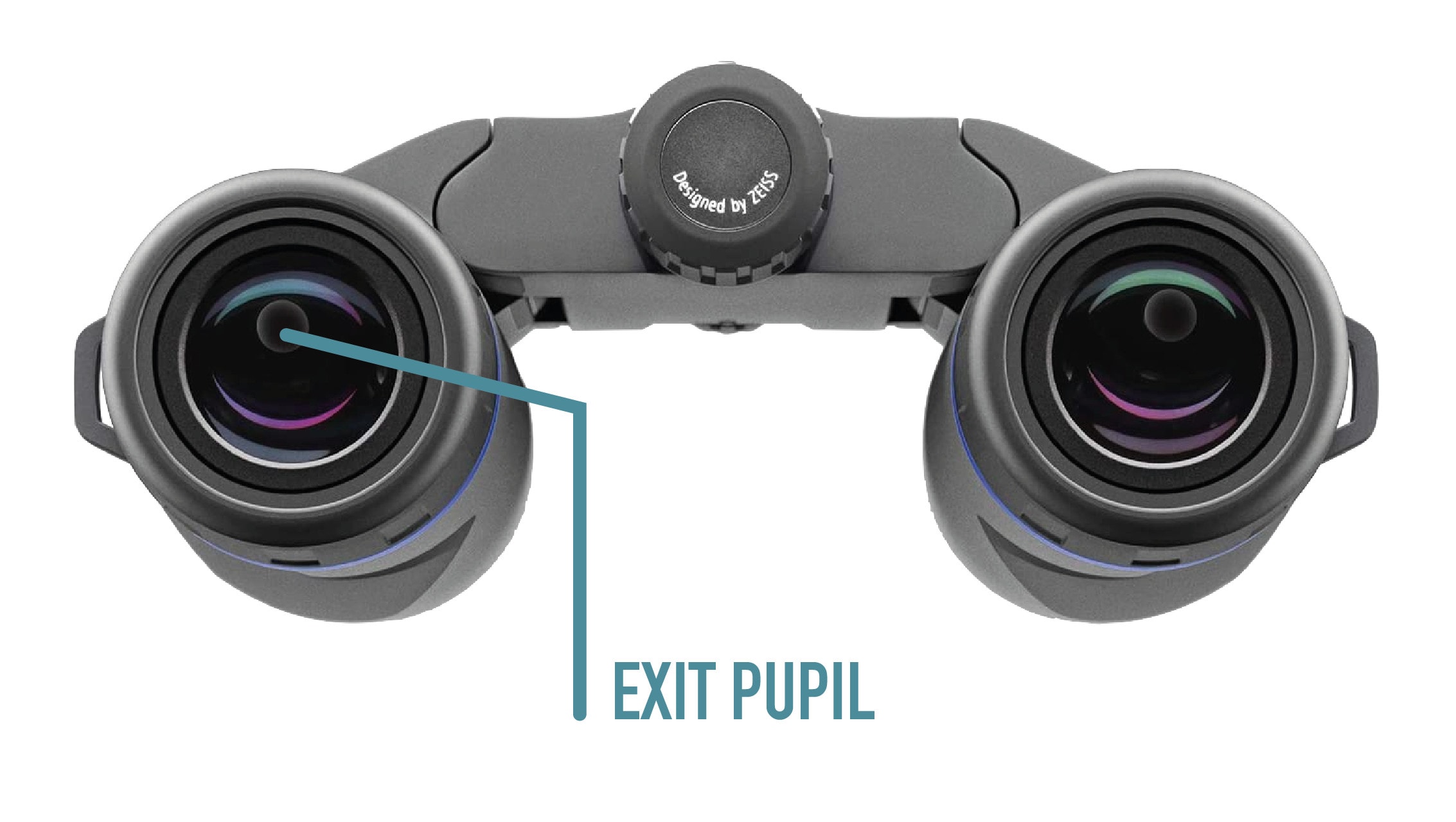
This would be a great set of binos for a younger individual. But you may want to swap out for a more compact set for an older user. They’ll get much more out of a compact set than our full-size example.
Eye Relief
Another number you should pay attention to that isn’t necessarily printed on the side of your optics is the eye relief. This is the maximum distance away from the viewing lens in which you can see the entire magnified field of vision.
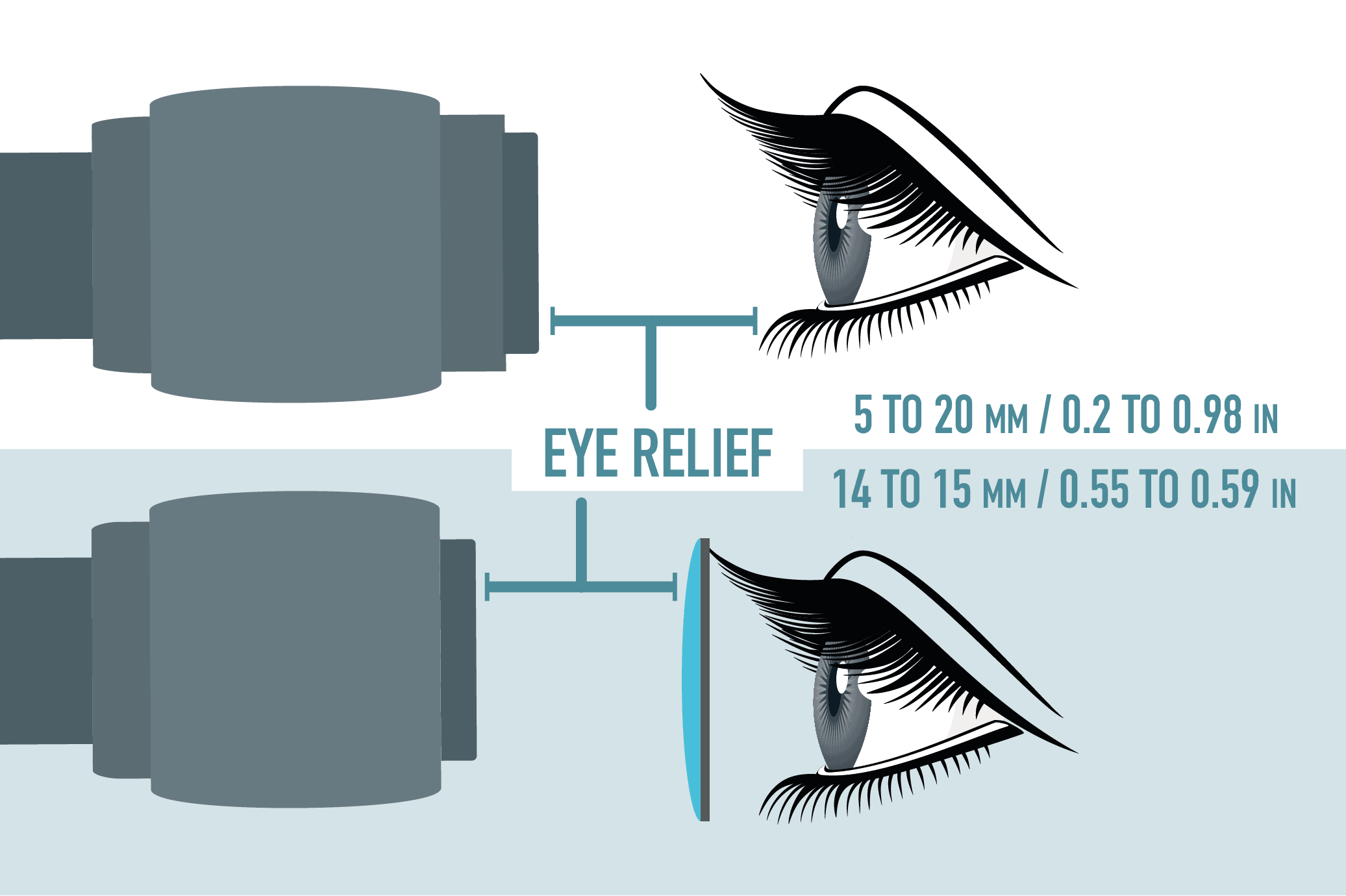
This number is extremely important for corrective glasses wearers. Since you will need to wear your corrective lenses to see through your binos, finding a set that has ample eye relief to accommodate your eyeglasses is crucial. Many binoculars only have an eye relief of 15mm (or less!) which is not nearly enough for most eyeglass wearers. Be sure to look for a larger eye relief as fits your situation.

Conclusion
As you can see, there is a bunch of good information you can get from just those two little numbers printed on the side of your optics. And understanding these considerations can turn a good binocular viewing experience into a great one.
We hope that this guide has helped you learn more about your current set or further informed you on a future purchase.
Featured Image Credit: Peqsels.com
About the Author Robert Sparks
Robert’s obsession with all things optical started early in life, when his optician father would bring home prototypes for Robert to play with. Nowadays, Robert is dedicated to helping others find the right optics for their needs. His hobbies include astronomy, astrophysics, and model building. Originally from Newark, NJ, he resides in Santa Fe, New Mexico, where the nighttime skies are filled with glittering stars.
Related Articles:
How to Clean a Refractor Telescope: Step-by-Step Guide
How to Clean a Telescope Eyepiece: Step-by-Step Guide
How to Clean a Rifle Scope: 8 Expert Tips
Monocular vs Telescope: Differences Explained (With Pictures)
What Is a Monocular Used For? 8 Common Functions
How to Clean a Telescope Mirror: 8 Expert Tips
Brightfield vs Phase Contrast Microscopy: The Differences Explained
SkyCamHD Drone Review: Pros, Cons, FAQ, & Verdict
